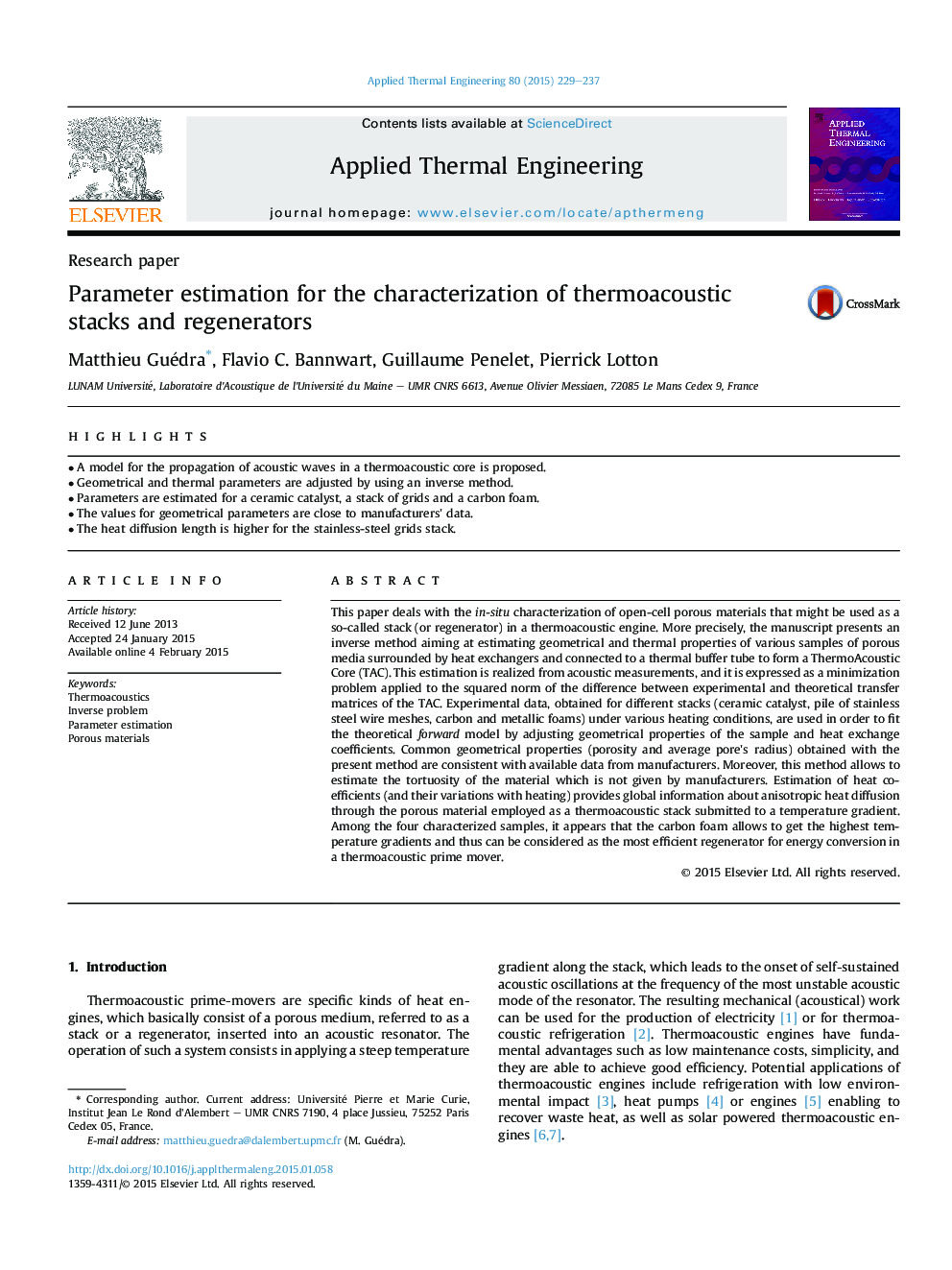| Article ID | Journal | Published Year | Pages | File Type |
|---|---|---|---|---|
| 645682 | Applied Thermal Engineering | 2015 | 9 Pages |
•A model for the propagation of acoustic waves in a thermoacoustic core is proposed.•Geometrical and thermal parameters are adjusted by using an inverse method.•Parameters are estimated for a ceramic catalyst, a stack of grids and a carbon foam.•The values for geometrical parameters are close to manufacturers' data.•The heat diffusion length is higher for the stainless-steel grids stack.
This paper deals with the in-situ characterization of open-cell porous materials that might be used as a so-called stack (or regenerator) in a thermoacoustic engine. More precisely, the manuscript presents an inverse method aiming at estimating geometrical and thermal properties of various samples of porous media surrounded by heat exchangers and connected to a thermal buffer tube to form a ThermoAcoustic Core (TAC). This estimation is realized from acoustic measurements, and it is expressed as a minimization problem applied to the squared norm of the difference between experimental and theoretical transfer matrices of the TAC. Experimental data, obtained for different stacks (ceramic catalyst, pile of stainless steel wire meshes, carbon and metallic foams) under various heating conditions, are used in order to fit the theoretical forward model by adjusting geometrical properties of the sample and heat exchange coefficients. Common geometrical properties (porosity and average pore's radius) obtained with the present method are consistent with available data from manufacturers. Moreover, this method allows to estimate the tortuosity of the material which is not given by manufacturers. Estimation of heat coefficients (and their variations with heating) provides global information about anisotropic heat diffusion through the porous material employed as a thermoacoustic stack submitted to a temperature gradient. Among the four characterized samples, it appears that the carbon foam allows to get the highest temperature gradients and thus can be considered as the most efficient regenerator for energy conversion in a thermoacoustic prime mover.
